It’s on a frigid Sunday in late October that I find myself climbing towards the ruins of a 13th Century limestone castle in Čachtice, Slovakia. Battling a bitter wind I draw my coat closer around me; but it is not only the weather sending shivers down my spine.
It is knowing that deep under these ancient cobbles – hidden in the basements of this unassuming Slovak town – hundreds of young women were brutally murdered. Their tortured souls haunt the stones of the castle towards which I now walk.
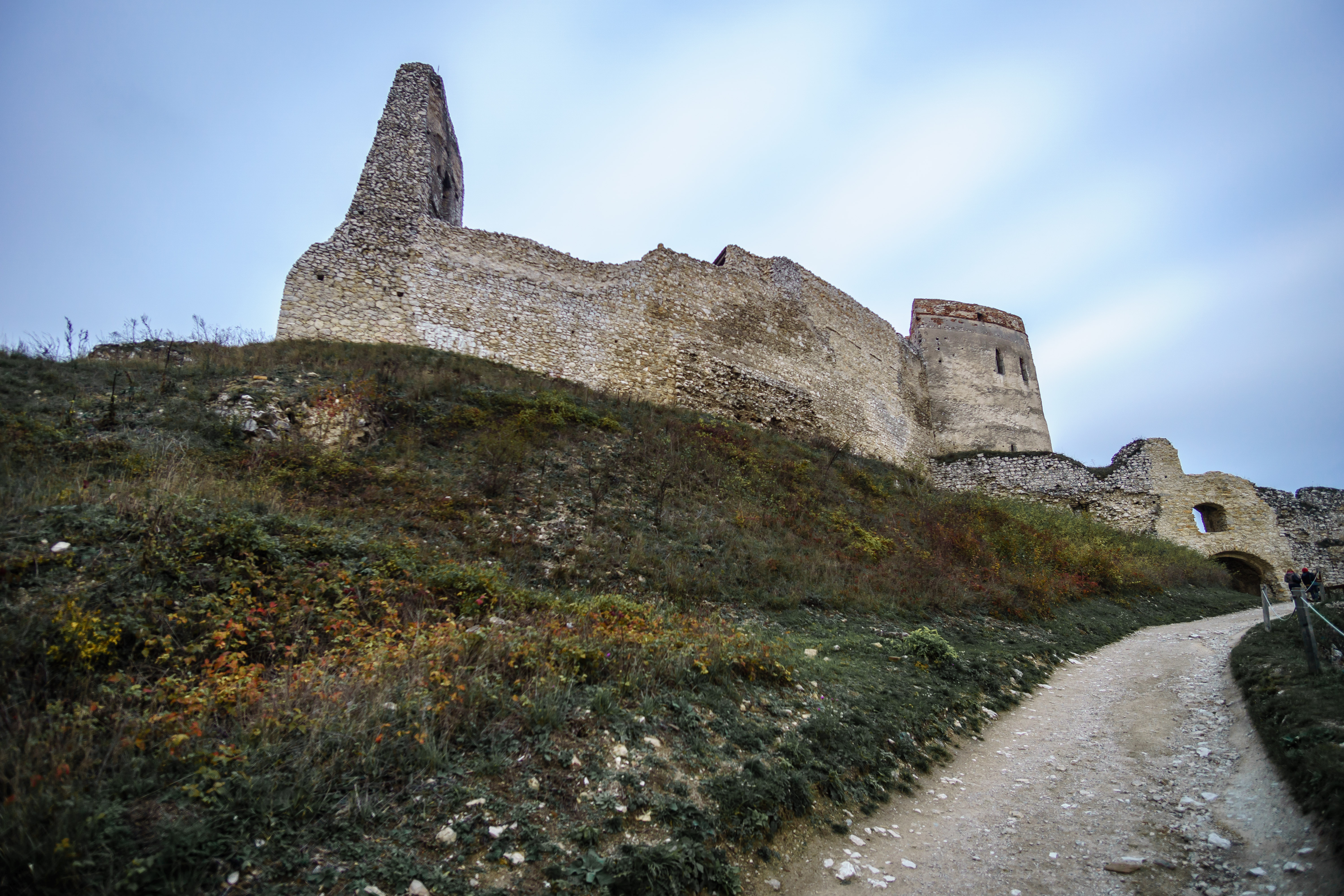
So numerous are these crimes that the perpetrator is listed in the Guinness Book of Records. The number of murdered women varies between 80 and 600. Most shocking of all – the murderer of these women was female. Not only was she female, she was a prolific Hungarian Noblewoman of the Hapsburg Monarchy. Her name was Elizabeth Báthory, and history remembers her as the Bloody Countess.
Elizabeth Báthory: The Bloody Countess
Over time, Báthory’s bloody narrative has fused with legend. Stories abound of the cruel countess bathing in virgin’s blood as 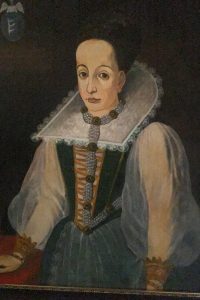 she desperately attempts to preserve her fading youth. Some call her a ‘female Dracula’: a fanciful image inspired by her Transylvanian properties, as well as the sexual nature of her crimes.
she desperately attempts to preserve her fading youth. Some call her a ‘female Dracula’: a fanciful image inspired by her Transylvanian properties, as well as the sexual nature of her crimes.
What we do know is that young women in and around the castle disappeared with alarming frequency between 1604 and 1610. When Báthory exhausted her supply of local women she opened a school to teach young noblewomen the art of ladies’ etiquette. Although locals had heard whispered rumours of evil in the castle for many years, it was not until the daughters of distinguished families disappeared that people really took any notice. When the local authorities investigated the castle, they found injured, dying, and dead women.
Saved by her title, and to prevent tainting her prestigious family name, Elizabeth Báthory didn’t stand trial for her crimes, but her accomplices did. They were executed. Instead, the authorities walled the Countess inside Čachtice Castle where she died four years later.
The Ruined Castle of Čachtice
Today, Čachtice Castle is a ruin on a hill. There are no rooms to enter, just a broken and empty shell from long ago.
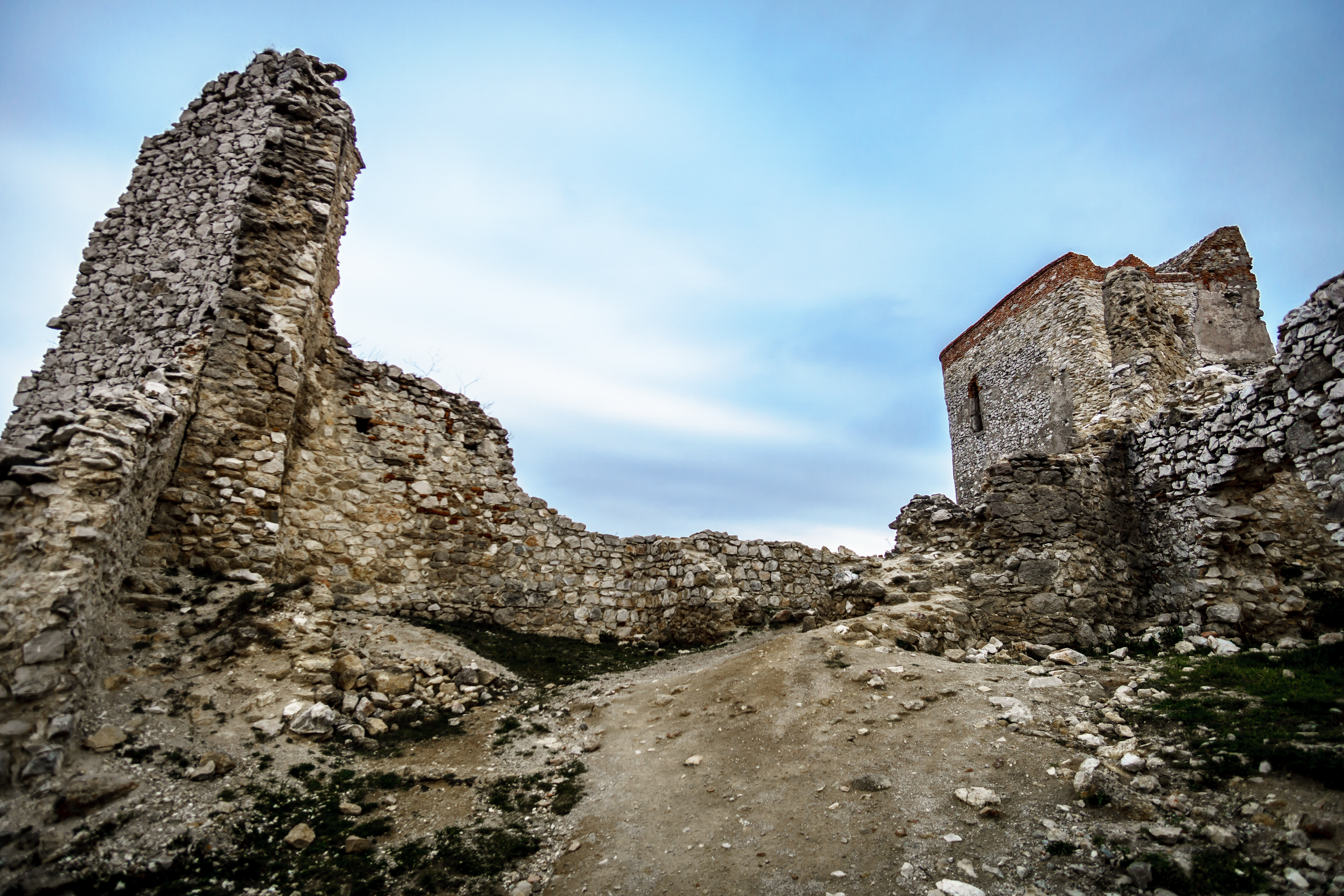
You may get a grisly shock entering one part of the castle where a narrow tunnel leads you to a particularly gruesome exhibit of a chained skeleton lying on a table.
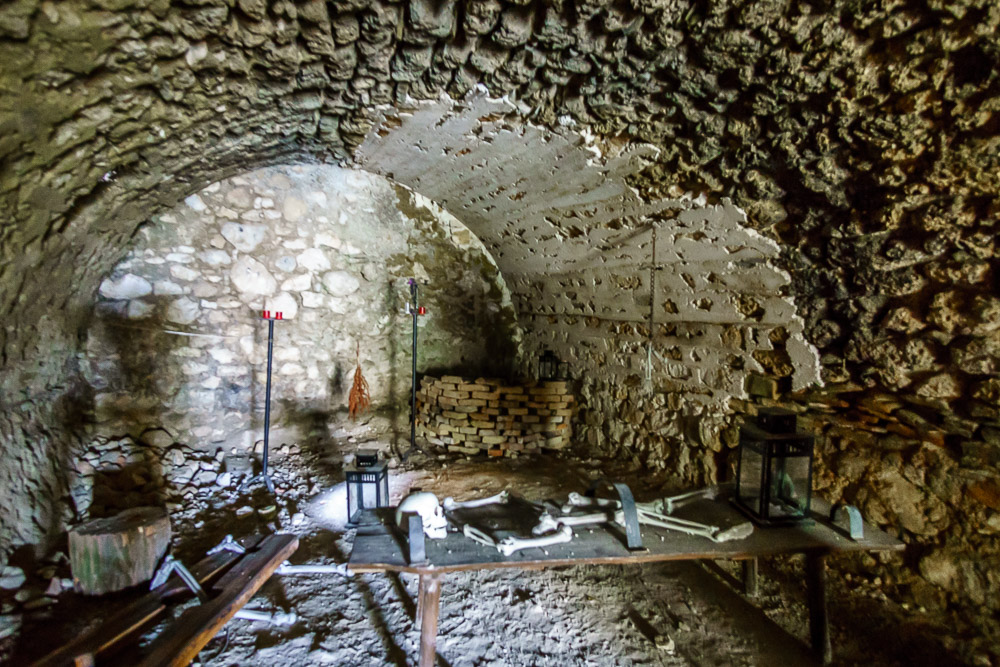
It is fake, of course, but creepy nonetheless.
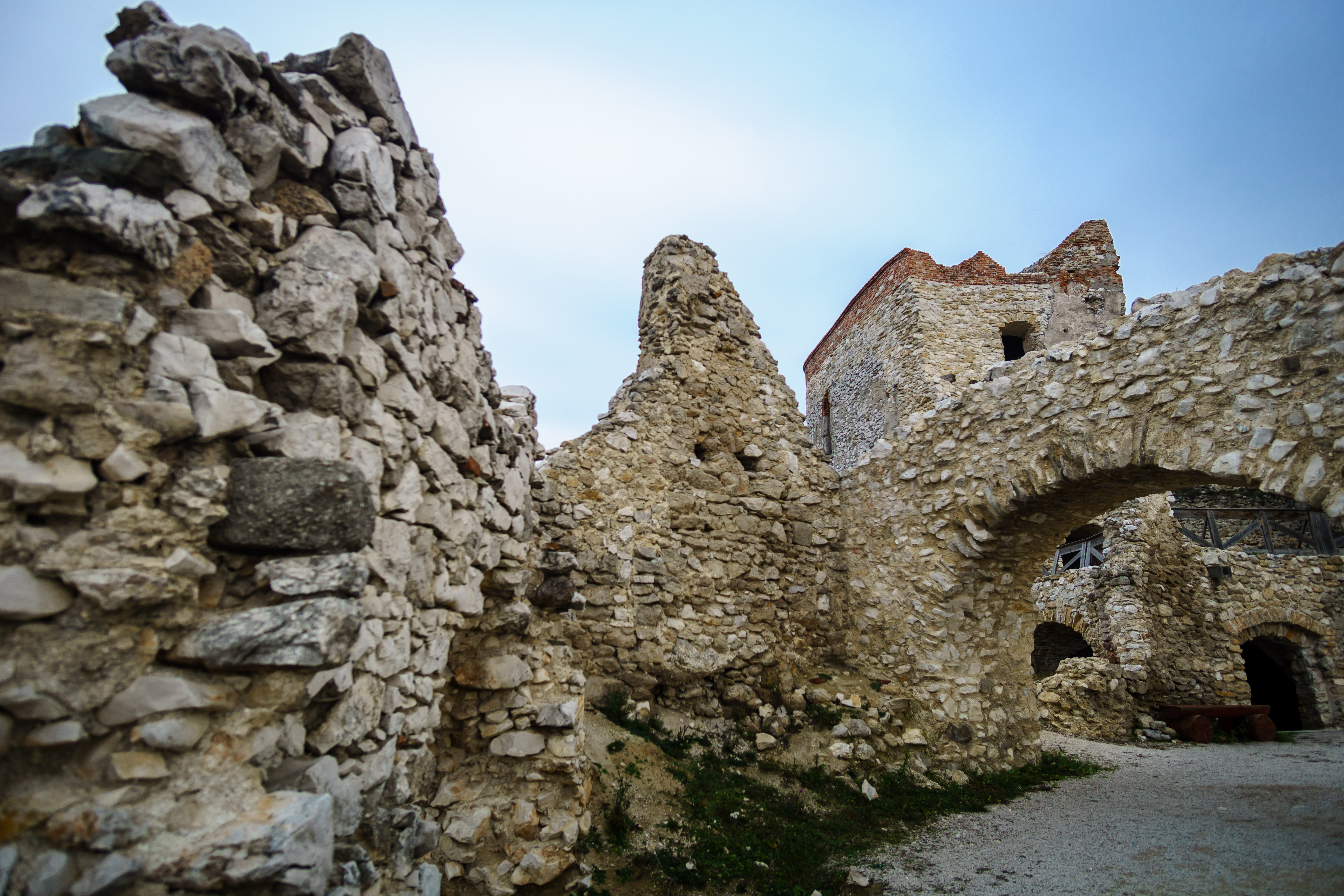
An autumnal wind blows through the crumbling structure, as I look upon the forest far below. I wonder how many young women the Bloody Countess took.
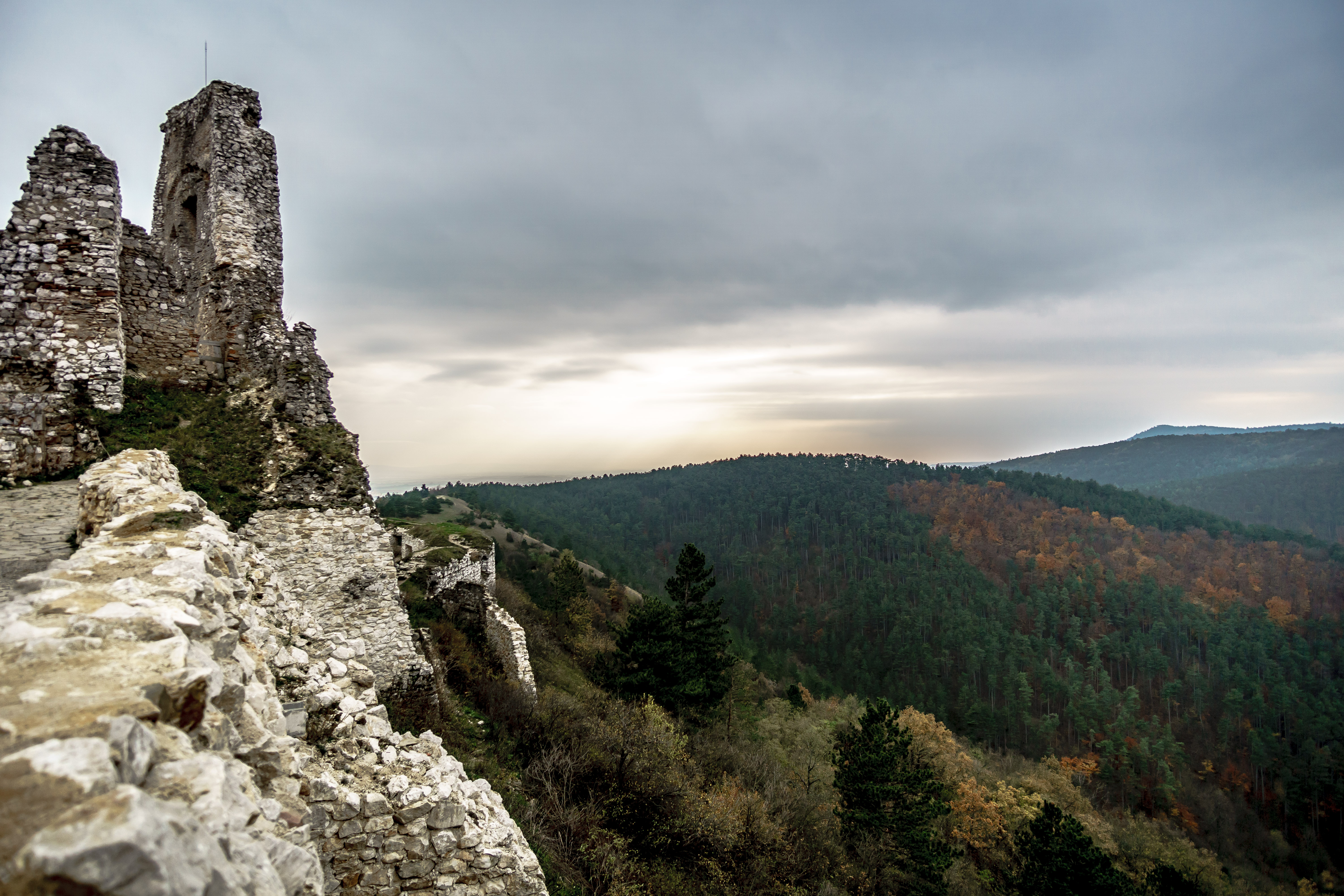
It’s a sobering thought.
Attitudes in the town of Čachtice are contrary. Surely they are not proud of the town’s grisly past, but they acknowledge their history in unexpected ways. A large wooden statue of Báthory stands outside a pizzeria bearing her name. The font of their sign resembles blood splatters. The statue – said to depict Báthory’s remorse – features a young woman at the Countess’ feet, her face is contorted in horror.
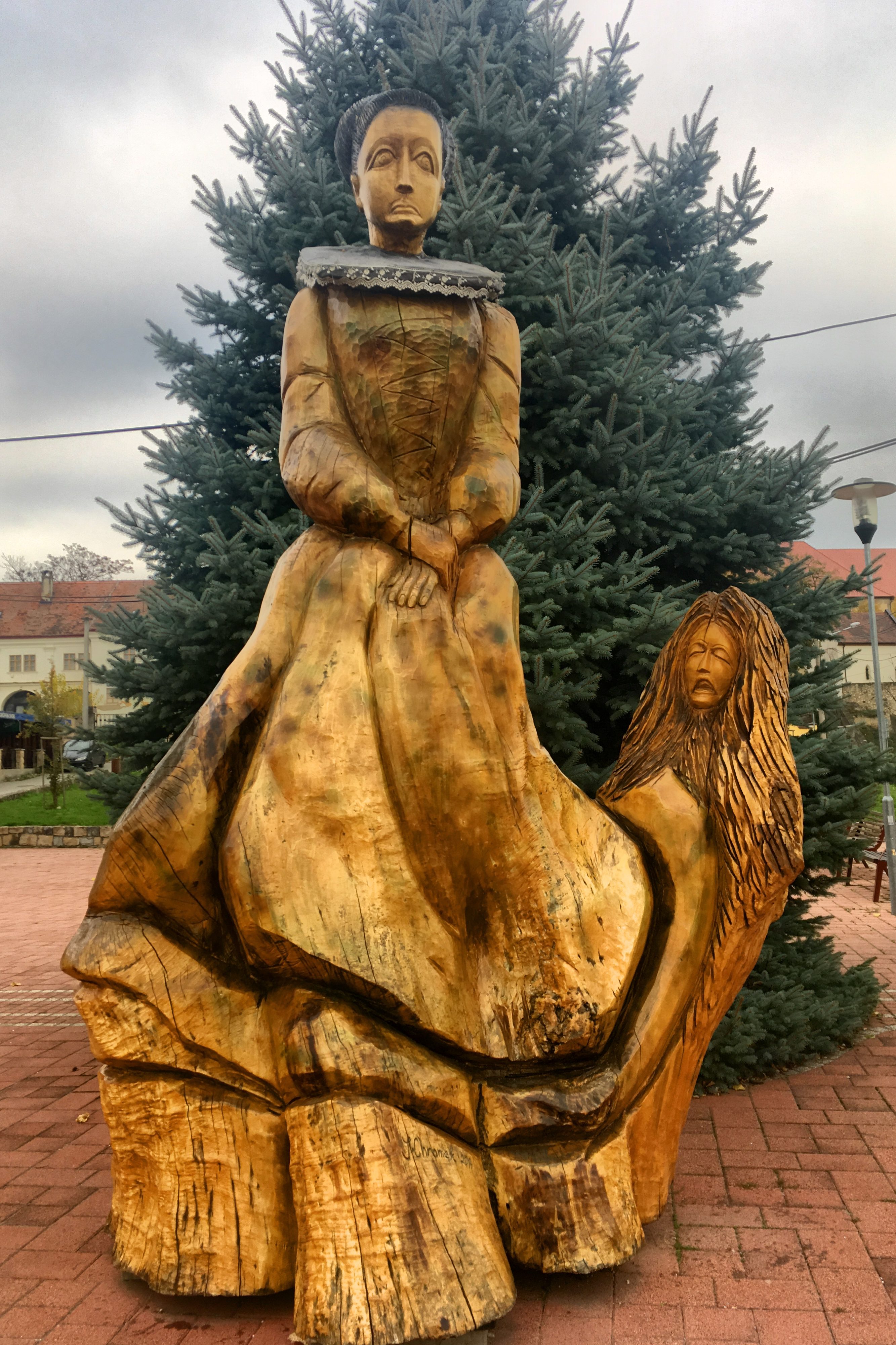
And another local restaurant features a dish called ‘Elizabeth’s Skewers’. As one of the gruesome tales describes Báthory cooking and eating a victim’s flesh, this seems particularly obtuse.

Allegedly, an underground wine cellar (said to be a possible location of the tortures and murders) stores a local wine named after her. It is red wine.
It seems a macabre way of acknowledging the past. Although, I suppose in London we might treat stories of Jack the Ripper in much the same manner – a morbid fascination with something that happened a long time ago is an easy gimmick to sell a bottle of wine.
Was Báthory the Victim of an Elaborate Set-Up?
There are claims that Báthory may simply have been the victim of an elaborate set-up. As a powerful, and vastly wealthy woman in the 17th Century, she no doubt had enemies who might take advantage of her. Once she became widowed, jealous neighbours and family members sought to claim her land. However, rumours about her circulated even before her husband’s death; and while it might be easy enough to frame somebody for a single murder, framing them for hundreds seems less plausible. You can read more about it in this article from The Telegraph.
As it stands now, History remembers her as an insatiable female vampire draining the blood of virgins to preserve her beauty. Until evidence is found that might clear her name, if indeed there is any, Elizabeth Báthory will be remembered as the Bloody Countess of Čachtice.
Thanks for dropping by. If you enjoyed this post please leave a comment below, or share on your social media channels.

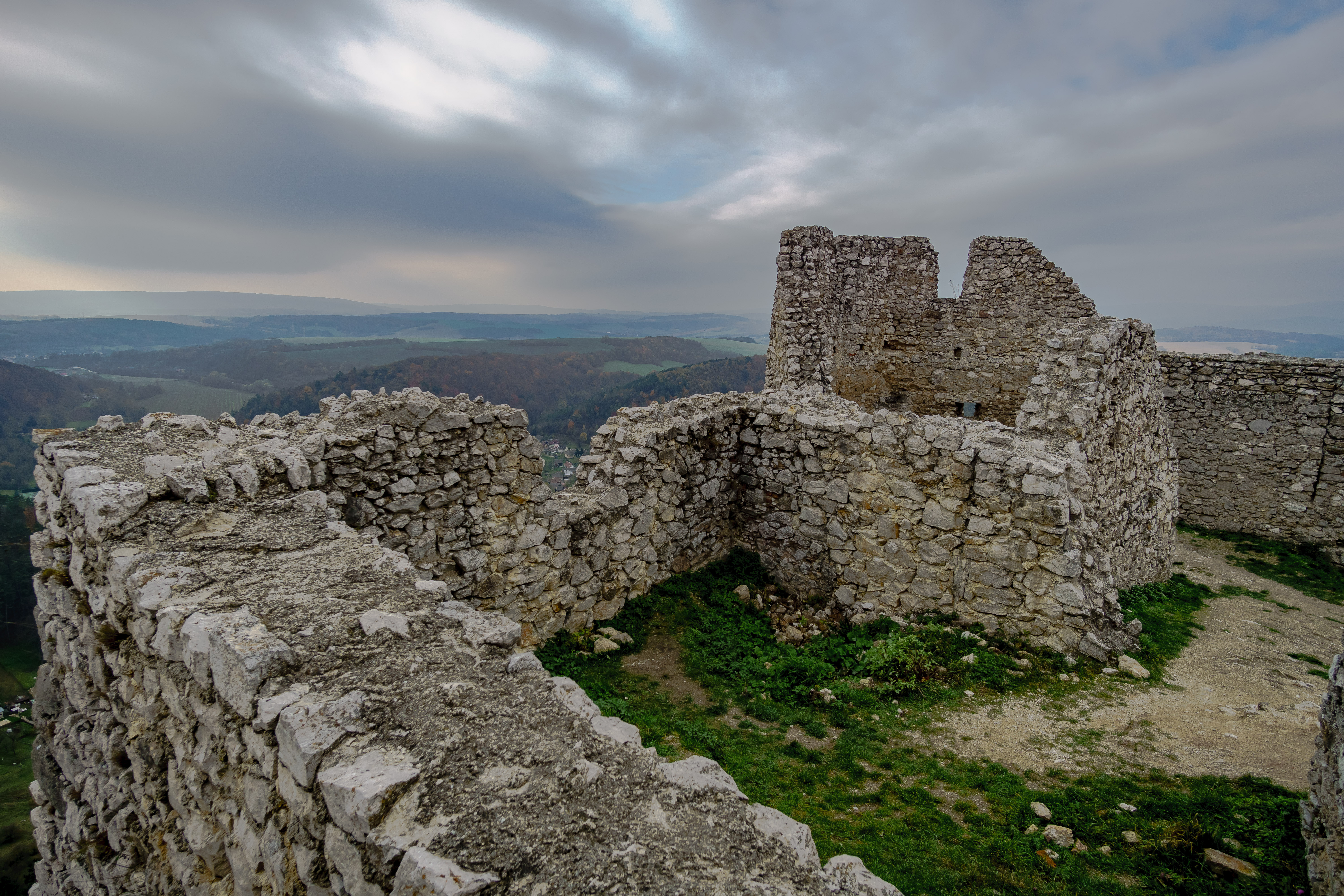

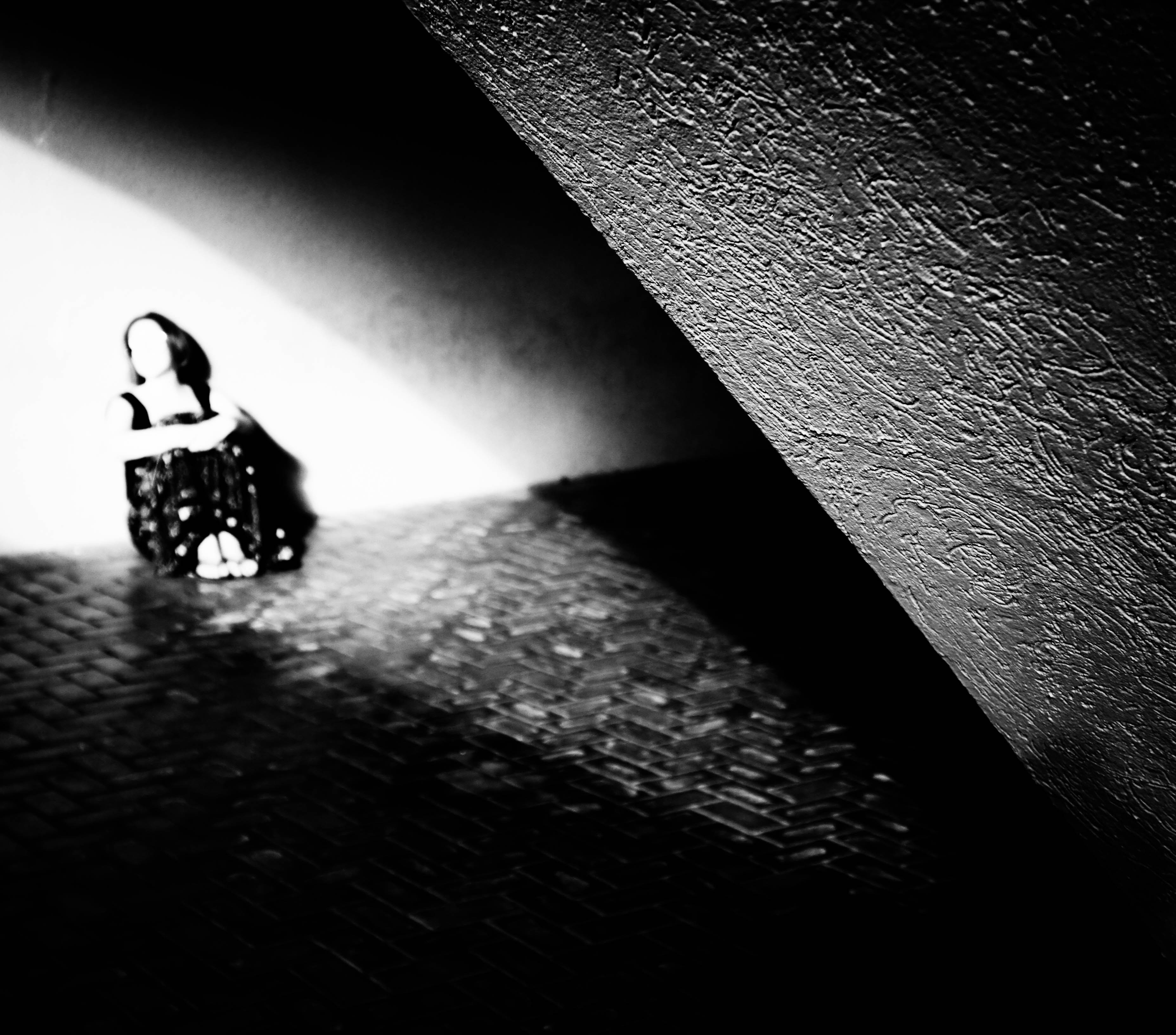
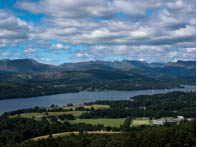
What a gruesome tale, I think that I would give the skewers a wide berth #BlogPostSaturday
Yes, I didn’t order them!
What a curious and sad story!
I had never head of the Bloody Countess.
Howeve, it seems to be a place worth visiting!
It’s definitely a strange story: if she is guilty, then what an evil person she was, but if she was set up then how horribly sad. And, of course, there is still the tragedy of all the young women who were murdered by whomever it was. I don’t suppose we’ll ever really know.
Wow… How have I never heard of the Bloody Countess of ?achtice? Love your writing style– I’m definitely intrigued and have added it to my list for when I visit Slovakia!
Thank you very much 😀
I do love to learn about the history and legend behind places I visit, as it really helps to bring a place to life. Although, wow, what a creepy story! And I can’t believe you can order “Elizabeth’s skewers” at one of the local restaurants! Sends shivers….?
It really does send shivers. I couldn’t believe they would name one of their dishes that!
Oooh I love a history lesson! What an incredible place! Thanks for sharing.
I love learning about history as I travel too!
Interesting structure, but damned if it doesn’t have the creepy back story to beat all creepy back stories. Very cool to visit.
…cooler still to be able to leave it.
Yes, it was creepy. It was close to Halloween when I visited, and it was one of those windy autumn days that makes everything seem even more dismal!
Hello! I love the tales of your travels, and I just so happened to stumble upon this blog post of the ?achtice Castle. I am currently, with my classmates, doing a school project on Elizabeth Bathory, and her life. I completely understand if you answer no, but would we be able to use a photo of yours for our project? More specifically the one of her statue? (With proper citations, of course 😉 ). I am unable to find any other photos on the internet with reuse citations. Our project is through the Oregon Historical Society, a competition for National History Day.
Hey! I love your blog, and hearing about your travels is so nice. This entry particularly interested me because a few of my friends and I are researching Elizabeth Bathory for a school project. We were wondering if we could use some of your pictures on our display board (with proper citations of course). I totally understand if you are not okay with it :). The project we are doing is National History Day (NHD) through the Oregon Historical Society. Thank you!